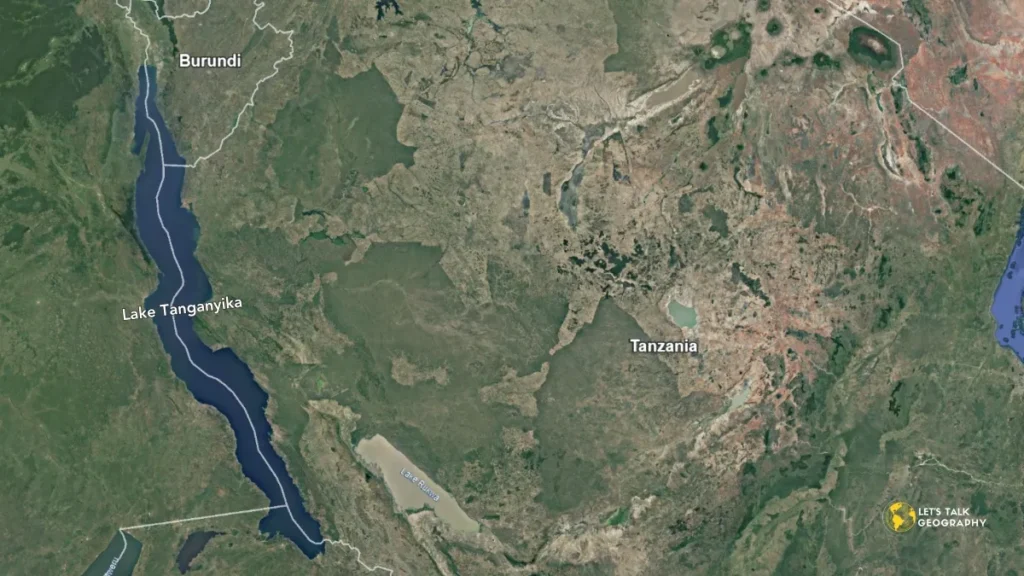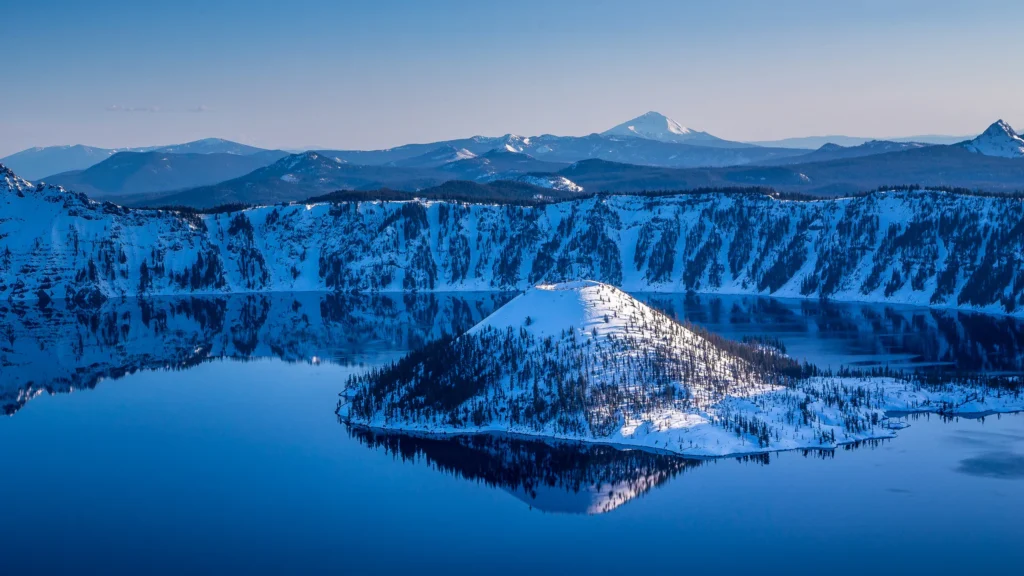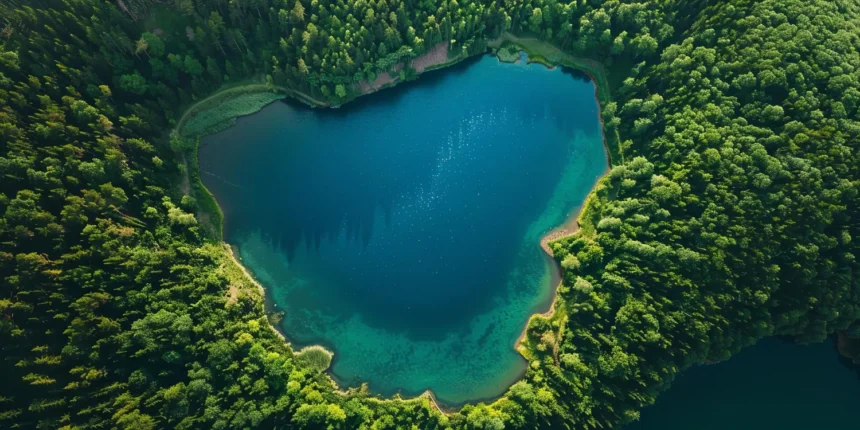Introduction:
The deeper the lake, the more secrets it holds beneath its surface.”
Nature’s wonders often hide beneath the surface, and the world’s deepest lakes are prime examples of these hidden marvels. These massive bodies of water are not just deep; they are mysteries waiting to be explored. But what does it take to fathom such extreme depths? Why are these lakes so important in our understanding of the Earth? In this article, we dive into the 10 world’s deepest lakes, explore their incredible features, and offer insights for travelers wanting to witness these natural wonders in person.
Challenges in Fathoming the World’s Deepest Lakes
Exploring the world’s deepest lakes is not just a geographical or scientific challenge—it’s an adventure. The immense pressure at these great depths makes exploration difficult even with the most advanced submersibles. Lakes like Lake Baikal and Lake Tanganyika stretch beyond 5,000 feet deep, meaning traditional scuba diving or basic underwater equipment won’t suffice. Only specially designed submersibles, equipped to handle the crushing pressures, can explore these hidden abysses.
Beyond the physical challenges, these lakes are located in remote, often difficult-to-reach areas. From the freezing waters of Lake Vostok in Antarctica to the sprawling expanse of Lake Tanganyika in Africa, traveling to these lakes requires determination and careful planning. Yet, for those willing to make the journey, the reward is witnessing nature at its most pristine and untouched.
Read More: Top 10 Strangest Landforms Around the World
1. Lake Baikal, Russia
Depth: 1,642 meters (5,387 feet)
Holding the title of the deepest lake in the world, Lake Baikal is both stunning and massive. This ancient lake, over 25 million years old, contains approximately 20% of the Earth’s unfrozen freshwater. For those visiting Russia, Baikal is more than just a body of water—it’s a UNESCO World Heritage site brimming with biodiversity.

- Travel Tip: If you visit during winter, you’ll witness the lake freeze over with crystal-clear ice, creating a surreal landscape. Guided tours offer ice trekking and hovercraft rides.
Read More: Lake Baikal: The Colossal Gem of Siberia
2. Lake Tanganyika, Africa
Depth: 1,470 meters (4,823 feet)
Stretching between four countries—Tanzania, Burundi, the Democratic Republic of Congo, and Zambia—Lake Tanganyika is the second-deepest lake in the world and one of the oldest. This lake is home to hundreds of fish species, many of which are found nowhere else on Earth.

- Travel Tip: Tanzania offers some of the best access to Lake Tanganyika, with several eco-lodges around the Mahale Mountains National Park, where visitors can hike, fish, or simply relax by the water.
Read More: Ignoring the Biodiversity Crisis Could Cost Us Everything
3. Caspian Sea, Europe/Asia
Depth: 1,025 meters (3,363 feet)
Technically a lake despite its name, the Caspian Sea is the largest enclosed inland body of water on Earth. The Caspian Sea’s mix of saltwater and freshwater ecosystems makes it a unique spot for marine biodiversity.
- Travel Tip: Traveling to the Caspian Sea is easier from the countries of Azerbaijan or Kazakhstan. Visitors can take boat trips, explore the surrounding beaches, or visit local museums that explain the region’s long history.
4. Lake Vostok, Antarctica
Depth: 1,000 meters (3,281 feet)
Buried beneath 4 kilometers of Antarctic ice, Lake Vostok is one of the least accessible and least explored lakes on Earth. This subglacial lake has remained sealed off for millions of years, and scientists are eager to discover what lies beneath its frozen surface.
- Travel Tip: While it’s nearly impossible for regular travelers to visit Lake Vostok, Antarctic cruises offer the chance to explore nearby landmarks like the Ross Ice Shelf and penguin colonies.
5. O’Higgins-San Martín Lake, South America
Depth: 836 meters (2,742 feet)
This striking glacial lake straddles the border of Chile and Argentina and is known for its stunning turquoise waters. Fed by surrounding glaciers, O’Higgins-San Martín provides visitors unparalleled views of Patagonia’s rugged beauty.
- Travel Tip: The nearby town of Villa O’Higgins in Chile offers easy access to boat tours. Travelers can also embark on scenic hikes or cross the border into Argentina for more adventure.
6. Lake Malawi, Africa
Depth: 706 meters (2,316 feet)
Located in Malawi, Mozambique, and Tanzania, Lake Malawi is home to more fish species than any other lake on Earth, making it a haven for biodiversity enthusiasts and divers.
- Travel Tip: Stay in lakeside lodges in Malawi, where you can snorkel, dive, or kayak through the crystal-clear waters and get up close with cichlid fish.
7. Issyk-Kul, Kyrgyzstan
Depth: 668 meters (2,192 feet)
Despite being located in a mountainous area, Issyk-Kul never freezes, thanks to its high salinity levels. The lake’s name translates to “warm lake,” and its unique properties make it a popular tourist destination in Kyrgyzstan.
- Travel Tip: You can visit Issyk-Kul year-round, enjoying hiking and horse trekking in the surrounding mountains and swimming in the warm waters.
8. Great Slave Lake, Canada
Depth: 614 meters (2,014 feet)
As North America’s deepest lake, Great Slave Lake in Canada’s Northwest Territories is remote and vast. Fishing and ice fishing are popular pastimes here, with plenty of opportunities to catch pike, trout, and whitefish.
- Travel Tip: Yellowknife, the capital of the Northwest Territories, offers the best access to Great Slave Lake. From here, travelers can enjoy boat tours, fishing trips, or even catch a glimpse of the Northern Lights in winter.
9. Crater Lake, USA
Depth: 594 meters (1,949 feet)
Located in Oregon, Crater Lake is the deepest lake in the USA and is famous for its striking blue color due to its clarity. The collapse of a volcanic crater formed this lake, and no rivers flow into or out of it.

- Travel Tip: Crater Lake National Park offers scenic drives, hiking trails, and boat tours that allow visitors to explore this natural wonder up close.
10. Matano Lake, Indonesia
Depth: 590 meters (1,936 feet)
One of the deepest tectonic lakes in the world, Matano Lake in Indonesia is not as well-known as some of the others on this list but is no less impressive. Its crystal-clear waters are ideal for diving and exploring the local flora and fauna.
- Travel Tip: Located in Sulawesi, Indonesia, Matano Lake is accessible via Makassar. For a more cultural experience, travelers can take boat tours or visit local villages.
Key Takeaway
The world’s deepest lakes are not just wonders of nature; they are treasures of biodiversity, history, and adventure. Whether it’s the towering depths of Lake Baikal or the serene beauty of Lake Malawi, each offers a unique experience that travelers won’t soon forget.
Conclusion
Exploring the deepest lakes reveals how much of our planet remains a mystery. These lakes are geological marvels that challenge human exploration and offer incredible experiences for those willing to venture out. Whether you’re a traveler seeking adventure or simply a lover of nature, these lakes are a testament to the awe-inspiring depths of Earth.
How are the world’s deepest lakes measured?
A lake’s depth is measured from the surface to its deepest point. This can be done using sonar technology, which sends sound waves to the bottom of the lake and measures the time it takes for the sound to return.
Why are some lakes so deep?
Lakes become deep due to various geological factors, including tectonic activity, volcanic activity, or glacial movements. Many deep lakes are in tectonically active areas where the Earth’s crust has been pulled apart, creating deep basins.
Can you dive into the world’s deepest lakes?
While some of the world’s deepest lakes, like Lake Baikal and Crater Lake, are accessible for diving, most require special equipment due to their extreme depths. Recreational diving is often limited to the shallower parts of these lakes.
What types of animals live in the world’s deepest lakes?
Deep lakes host a variety of unique species, many of which are endemic (found nowhere else). For example, Lake Baikal is home to the Baikal seal, while Lake Malawi is famous for its diverse species of cichlid fish.
Is it safe to swim in deep lakes?
Swimming in deep lakes is generally safe, especially in designated swimming areas. However, due to cold temperatures and strong currents in some deeper lakes, it’s important to follow safety guidelines and be cautious.
Are there any undiscovered species in deep lakes?
Scientists believe deep lakes, especially those less explored, like Lake Vostok, could still harbor undiscovered species. The unique conditions in these lakes can support life forms that have adapted to extreme environments.





